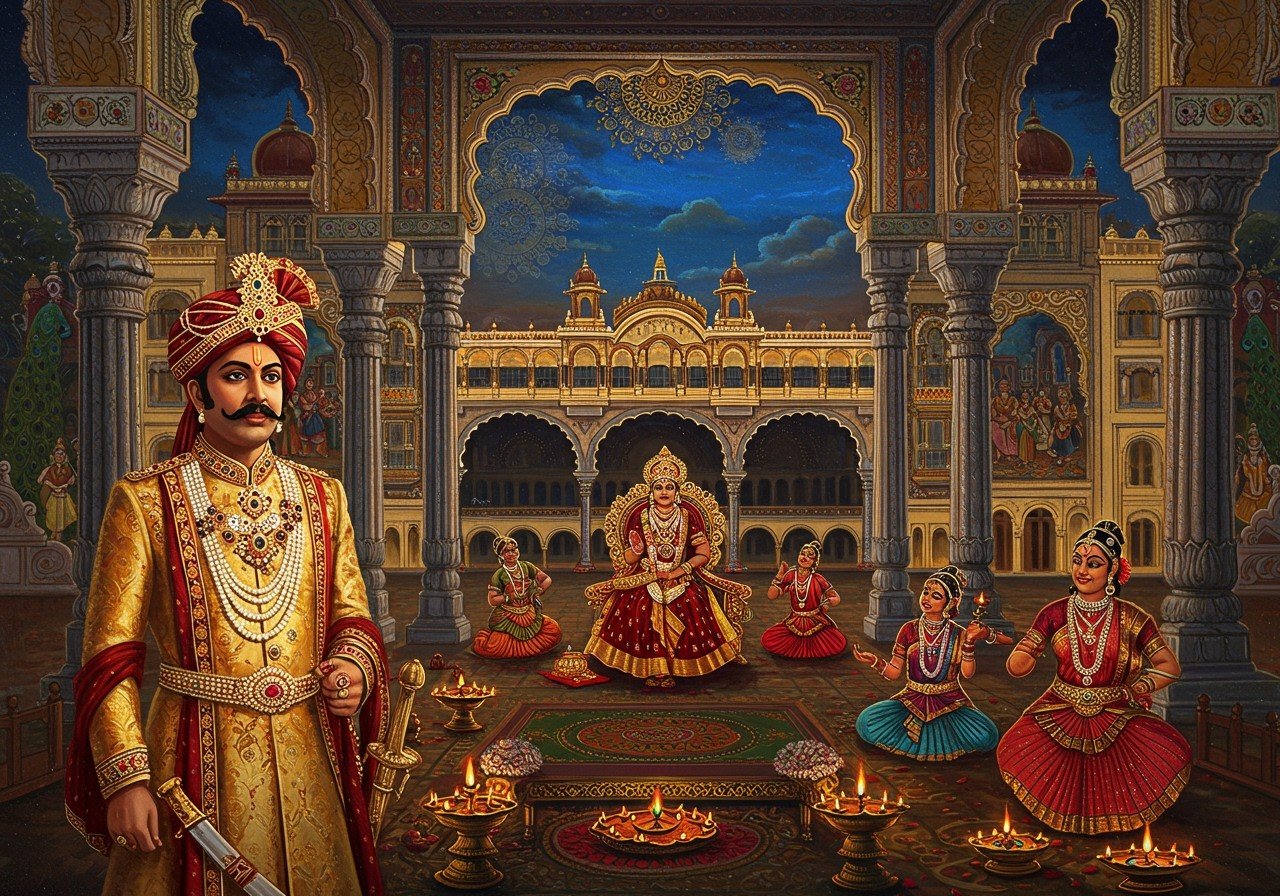
Mysore’s history is deeply intertwined with the Wodeyar Dynasty, which shaped the city into a cultural and architectural marvel. This era, spanning from 1399 to 1950, is often referred to as Mysore’s Golden Age and holds immense significance for those who value traditional heritage and authentic rituals. Understanding this period allows us to appreciate the rich legacy that continues to influence contemporary Indian society.
Founding of the Kingdom of Mysore
In the late 14th century, amidst a landscape of diverse kingdoms and rulers in South India, Raja Wodeyar established the kingdom of Mysore in 1399. Employing astute strategies, he consolidated power and gained control over the region. His determination and wisdom were instrumental in overcoming initial challenges, laying a strong foundation for the dynasty’s future prosperity. This marked the beginning of a powerful reign that would shape the region for centuries to come.
Consolidation and Expansion
Several prominent rulers of the Wodeyar Dynasty played pivotal roles in expanding and strengthening Mysore. They implemented administrative reforms and led military campaigns that fortified the kingdom. Diplomatic alliances and conflicts with neighboring states also shaped Mysore’s trajectory. For example, Chikka Devaraja Wodeyar significantly expanded the kingdom’s territory, leaving a lasting impact on its geographical boundaries.
Cultural and Architectural Contributions
The Wodeyar Dynasty is renowned for its remarkable cultural and architectural contributions. The iconic Mysore Palace, a magnificent blend of Indo-Saracenic, Islamic, Rajput, and Gothic architectural styles, stands as a testament to their vision. Constructed in the 19th and 20th centuries after a fire destroyed its predecessor, the palace is celebrated for its intricate design, captivating museum, sprawling gardens, and the vibrant Mysore Dasara festival. This palace represents a culmination of architectural styles and stands as a symbol of the dynasty’s grandeur. It is believed to be the third or fourth iteration of the palace on the site, highlighting a history marked by resilience and renewal.
Beyond the palace, the Wodeyars were patrons of the arts, literature, and music, fostering a unique cultural identity for Mysore. Hindu traditions and festivals, particularly the grand Dasara celebrations, were given immense importance, enriching the cultural tapestry of the region. These traditions continue to resonate with the people of Mysore even today.
Economic and Social Developments
The economic policies implemented by the Wodeyar rulers brought significant prosperity to Mysore. They fostered trade and commerce by establishing bustling markets and strategic trade routes. Advancements in agriculture and irrigation systems boosted food production, ensuring the well-being of the population. Social reforms, along with the promotion of education and public welfare, were also central to their rule, demonstrating a holistic approach to governance.
Legacy and Decline
The decline of the Wodeyar Dynasty in the late 18th century was influenced by a confluence of factors, including the rise of British colonialism. Mysore’s integration into the British Raj significantly altered its political landscape. Despite this, the legacy of the Wodeyar Dynasty remains deeply ingrained in modern-day Mysore, evident in the preservation of historical sites and the continued reverence for its rulers. The spirit of the dynasty lives on in the cultural fabric of the city.
Conclusion
The Wodeyar Dynasty’s profound impact on Mysore’s history and culture is undeniable. From its inception in 1399 to its enduring architectural marvels and vibrant cultural traditions, the dynasty’s legacy is both rich and multifaceted. Their contributions to art, architecture, economy, and social development continue to shape Mysore today. Even amidst challenges, including British colonialism, the essence of the Wodeyar Dynasty perseveres. Preserved historical sites and ongoing traditions, such as the magnificent Mysore Dasara festival, serve as poignant reminders of the Wodeyar rulers’ enduring influence. Understanding their history allows us to appreciate the traditions that define contemporary Mysore and underscores the importance of safeguarding our rich cultural heritage.
Poojn.in, India’s leading online store for cultural and religious goods, offers a wide selection of products related to Hindu traditions and rituals. Celebrate the rich heritage of the Wodeyar Dynasty and the vibrant traditions they championed with authentic puja items, idols, and more. Explore our collection at poojn.in and bring the spirit of Mysore’s Golden Age into your home.
Looking for specific items related to the Wodeyar Dynasty’s patronage of Hindu traditions? Discover a curated selection of:
- Idols and statues of deities prominent in Mysore’s temples: https://www.poojn.in/product/10386/radha-krishna-bigraha-14-inch-approx-radha-krishana-jodi-pure-marble-finished-marble-dust-sculpture-for-worship. Find beautifully crafted deities revered during the Wodeyar reign, adding a touch of historical significance to your puja space.
- Incense and other puja essentials: https://www.poojn.in/product/12105/kushal-mangal-sandalwood-puja-prayer-agarbatti-incense-stics-liberty-pack-of-6-box-100-gm-each. Enhance your worship experience with high-quality incense and other essential items, reminiscent of the traditional rituals practiced during Mysore’s Golden Age.
Exploring Related Topics on Poojn.in:
- Chamundeshwari Temple: https://www.poojn.in/post/17248/chamundeshwari-temple-mysore-your-complete-visit-guide. Delve deeper into the history and significance of this important temple closely associated with the Wodeyar Dynasty.
- Ranganathaswamy Temple: https://www.poojn.in/post/17298/ranganathaswamy-temple-srirangapatna-a-complete-guide. Learn about another significant temple in the region and its connection to the Wodeyar rulers.


